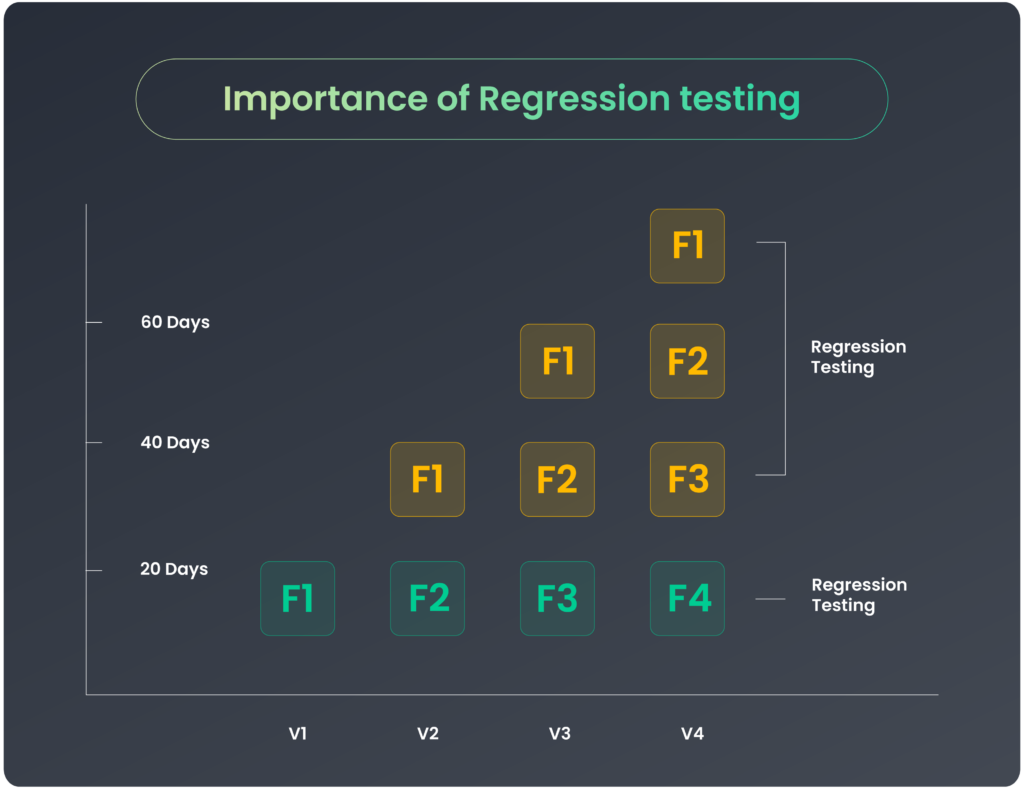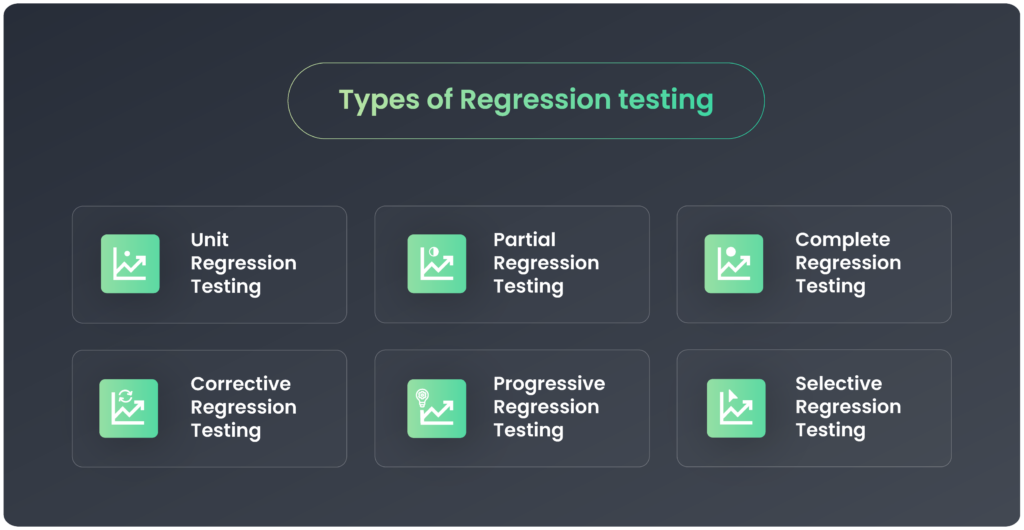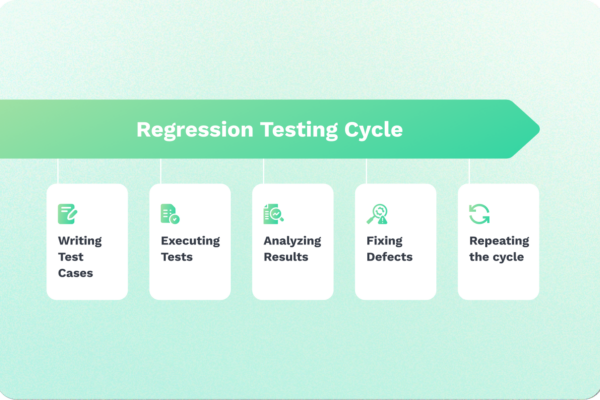Regression testing is an important practice in software development. It tests to ensure your application remains stable and reliable even as changes and updates are introduced.
Each new change introduces a risk of breaking existing functionalities, potentially causing shipping delays or launch postponements.
Evaluating your application against a full suite of tests helps find and fix unexpected software bugs or errors. It minimizes the effect on your users, including slow performance, crashing, and protecting your software’s integrity.
This article will explore regression testing, why it’s important, techniques and tools, and best practices.
Let’s get started.
Table of Contents
- What is regression testing?
- Why is regression testing important?
- Types of regression testing
- Regression testing techniques
- Regression testing best practices
- Top 7 regression testing tools and frameworks
- The difference between regression testing vs retesting
- Challenges in regression testing
- FAQ on regression testing
- Optimize your regression testing with Ghost Inspector
Automate codeless regression testing
with Ghost Inspector
Our 14 day free trial gives you and your team full access. Create tests in minutes. No credit card required.
What is regression testing?
Regression testing is software testing performed to ensure that existing functionalities, designs, and dependencies continue to work as expected after changes or updates are made to the codebase. It aims to detect any unintended breaks or regressions introduced by modifications.
An example of when regression testing is used is when new functionality is added to an existing system, such as an e-commerce website. Suppose the developer adds a new feature allowing users to ship products to multiple delivery addresses. This could impact existing functionalities like checkout, payment gateways, or order tracking.
Regression testing ensures the new “ship to multiple addresses” feature works as intended while verifying that it hasn’t accidentally broken any of the website’s previous core functionalities that customers rely on.
If the team has to fix a bug in the software, it tests regression to verify that it has resolved the bug and that the fix did not introduce any new issues or break any existing functionality.
Why is regression testing important?

Regression testing offers several advantages throughout the software development lifecycle. Here are a few examples:
Cost optimization
Whenever software undergoes changes, companies use regression testing to remove the risk of costly future product repairs. For instance, users’ private data may become exposed during a recent product update. Malicious individuals can use this for harmful purposes, resulting in financial losses for the organization.
Enhanced software quality
Thorough regression testing ensures software deployed into production is free from anomalies and maintains its quality and stability.
Improved customer satisfaction
The purpose of building software or products for users is to solve their pain points. Delivering high-quality software that meets customer expectations and functions as intended is important for customer satisfaction. Regression testing helps identify and address potential issues before they reach end-users.
Reduced risk of breaking existing functionality
Adding new functionalities should not compromise your software’s current performance. Use regression testing to ensure that these functionalities integrate smoothly with the existing system without causing disruptions. This careful approach helps maintain the software’s stability and reliability.
Increased confidence in new releases
Comprehensive regression testing gives stakeholders and the development team confidence that the software has undergone thorough validation and is ready for release without causing significant disruptions.
Prevent launch delays
By incorporating regression testing into the development cycle, teams can identify and fix defects early, reducing the likelihood of downstream problems and subsequent delays.
Types of regression testing

Understanding the types of regression testing helps you choose the right approach for your project. Let’s explore the various regression tests below.
Unit regression testing
This type tests individual parts of the code, such as functions or methods, to ensure they work correctly. For example, it tests whether a login function properly handles incorrect user credentials.
Partial regression testing
Partial regression testing checks only certain recently updated parts of the software. This approach helps identify whether the new changes have disrupted the existing functionalities.
Complete regression testing
Complete regression testing ensures that the entire software maintains its functionality along with the newly added updates. It validates end-to-end functionality after any change, no matter how small.
Corrective regression testing
Corrective regression testing checks fixes and updates to see if they solve the problems they’re meant to without creating new issues. It often includes routine checks to ensure that no changes have unexpectedly affected the software. This testing is also useful for checking whether existing tests can still be applied without modifications.
Progressive regression testing
Progressive regression testing is performed step-by-step as new features are added. This ensures that each new addition integrates well with the existing system. Testers adjust their test scripts to account for these changes.
Selective regression testing
Selective regression testing involves choosing and running a subset of test cases from the existing test suite to reduce testing costs and time. It typically focuses on areas based on specific criteria such as risk, priority, or code coverage. For instance, testers might focus on ensuring that a payment system correctly processes large transactions.
Regression testing techniques
There are several techniques to choose from when it comes to regression testing. Each has its own strengths and weaknesses.
Retest everything
After any code changes, this technique executes the entire test suite, including all test cases. For example, when releasing a new version of your product or core application, you often need to retest the whole system. It ensures that all features and functionalities work as expected after the changes.
Regression test selection
This technique increases the speed of testing by selecting the most impactful test cases that are likely to be affected by changes in the program. This focused selection helps complete regression testing more quickly and efficiently.
Test case prioritization
In every regression test, some features impact a software’s success and functionality more than others. Prioritize these features and execute test cases to test the added features thoroughly.
For instance, in an e-commerce application, test cases related to the checkout and payment processes can be prioritized and executed first during regression testing, as these are critical functionalities that need to work correctly.
Hybrid strategy
A hybrid strategy combines techniques like test case prioritization and regression test selection for efficient and thorough testing. This method is ideal for complex projects that need quick yet comprehensive testing. It integrates different approaches to quickly cover essential parts of the application without compromising on quality, ensuring a streamlined and effective testing process.
Regression testing best practices
Implementing the right best practices is key to optimizing regression testing and ensuring consistent, high-quality results. Here are some best practices to consider:
Develop a comprehensive regression testing plan
A regression testing plan should define the scope and goals. It should also cover the testing strategy, test cases, resources, and timelines. This plan serves as a roadmap for the entire regression testing process. It also helps ensure consistency and completeness.
Identify code modifications
Carefully analyze the code changes, bug fixes, and enhancements made in the current development cycle. This analysis identifies the area of the software that may be impacted and require regression testing.
Prioritize affected areas and test cases
Prioritization is key to optimizing regression testing efforts. Categorize test cases based on their criticality and the likelihood of being affected by the changes:
- High-priority tests for core functionality: To ensure stability, test cases covering the most critical and frequently used features should be prioritized.
- Medium priority tests for important features: Next, include test cases for significant but less critical functionalities.
- Low-priority tests for complex or edge cases: If time and resources are limited, these test cases can be executed later or deprioritized.
Define testing entry and exit criteria
Establish clear entry and exit criteria for regression testing. Entry criteria may include conditions like successful completion of unit testing, availability of test environments, and code readiness. Exit criteria could involve metrics such as test case coverage, defect resolution, and stakeholder approval.
Categorize regression test cases
Categorize test cases based on various factors to help efficient execution and maintenance:
- Automated vs. Manual test cases: To achieve faster execution, identify the test cases that are automated and the ones that require manual intervention.
- Critical vs. Non-critical feature tests: Separate test cases based on the criticality of the features they cover.
- Functional, performance, security, etc.: Group test cases by different types of testing for better organization and focused testing.
Set up appropriate test environments
Ensure that dedicated test environments are available. Configure the environment to mirror production-like conditions. This includes hardware, software, data, and network configurations.
Schedule and execute regression tests
Set a schedule for doing regression tests. Consider factors like test case prioritization, available resources, and release timelines. Automate the execution process as much as possible to improve efficiency and consistency.
Measure and analyze regression testing results
Collect and analyze metrics related to test case execution, defect detection, and general regression testing effectiveness. Use these insights to identify areas for improvement and refine the regression testing process for future releases.
Top 7 regression testing tools and frameworks
Here are seven popular options:
Ghost Inspector
Ghost Inspector simplifies regression testing by giving testers the power to create no-code/low-code automated test scripts that simulate user flows on a website or web app. With Ghost Inspector, tests can be recorded, saved, and scheduled for future automated runs, ensuring that regression bugs are caught and resolved before they can cause issues for users.
Thanks to Ghost Inspector’s detailed reporting features and screenshots, testers can easily monitor the outcomes of each test run. Ghost Inspector’s robust API and integrations—including GitHub, GitLab, and BitBucket—make it easy to assimilate automated regression testing into any QA team’s development cycle.
Selenium
Selenium is an open-source web testing tool for performing cross-browser testing. It enables tests on various browsers and operating systems. It’s an automation testing tool that allows the reusability of test scripts. Selenium consists of three major components: Selenium IDE, which can be used to record tests; web driver, which is used to write tests; and Selenium Grid, which allows testing on various devices.
Cypress
Cypress is another open-source end-to-end testing tool built on the Javascript programming language. It uses the Chrome dev tools to debug your code as you test along easily. Cypress enhances visibility into the testing process by automatically taking screenshots at every step, providing testers with a clear and detailed view of each test stage.
Playwright
Built on Node.js, Playwright is a headless web testing tool built by Microsoft. It uses the command line to write automated test scripts without a browser IDE. A major feature of Playwright is that it supports various programming languages, making it an inclusive tool for developers of different backgrounds.
Puppeteer
Puppeteer is a Node.js library created by Google for automating the Chrome browser. While not primarily designed for regression testing, it can be used by writing scripts to interact with web applications and perform necessary validations. Puppeteer is particularly useful for testing scenarios involving JavaScript-heavy applications.
Katalon platform
Katalon is an all-in-one test automation solution that supports web, mobile, and API testing. It offers a comprehensive platform for creating, executing, and managing regression tests. Katalon provides both a user-friendly interface and a scriptless approach, making it accessible to users with varying technical expertise.
Appium
Appium is an open-source web tool for automated UI testing across multiple platforms. It’s made up of three components: the Appium Client, which is used to write the testing scripts; the Appium server, which works as a messenger that transfers commands and responses between the client and the software; and, lastly, the End device, where the tests are carried out.
The difference between regression testing vs retesting
The main differences lie in purpose, scope, test case selection, and timing within the product development lifecycle.
- Purpose: Regression testing aims to ensure that existing functionalities remain unaffected after changes. Retesting focuses on verifying fixes or improvements made to address previously identified defects.
- Scope: Regression testing covers a broader scope, including both modified and unmodified areas of the software. Retesting is typically limited to the specific areas impacted by the defect fixes.
- Test case selection: Regression testing may involve executing a subset or the entire suite of test cases. Retesting typically targets only the test cases related to the fixed defects.
- Frequency and timing: Regression testing is a recurring activity performed after every code change or update. Retesting occurs after defects have been addressed, often during the testing or bug-fixing phase.
Challenges in regression testing
Despite its importance, regression testing presents several obstacles that organizations must overcome.
Time-consuming and costly
Regression testing is not a one-off activity; it involves continuous testing and retesting, which can be time-consuming and affect the development team’s productivity.
Complex
Regression testing can be complex and overwhelming because it requires developers to constantly monitor and analyze test results after each update to the codebase. To make this easier, the development team should break down the testing process into smaller, manageable parts, which can help improve efficiency.
Regular maintenance
When software or websites are updated with code, the newly added features need to be tested and tracked. Maintaining an up-to-date testing suite that aligns with the code updates may take time due to the frequent number of updates requiring testing.
Communicate business value
When new features are added to the software, communicating the business value of the updates to team members not directly involved in regression testing can be challenging, especially for non-technical members. Involving the entire team in the testing and development processes is important.
Now, let’s address some frequently asked questions about regression testing.

FAQ on regression testing
What is regression testing used to test?
Regression testing ensures that existing software functionalities continue to work as expected after code changes or updates. It validates the newly added features and the previously working components to detect any unintended regressions or breaks introduced by modifications.
Is regression testing the same as UAT?
No, regression testing and User Acceptance Testing (UAT) are different. Developers perform regression testing in-house by developers to verify new features and ensure existing functionalities remain stable. UAT involves end-users testing the software in real-world scenarios to validate if it meets the intended requirements.
What is the difference between regression testing and regular testing?
Regular testing focuses on validating new features or functionalities during initial development. Regression testing, however, retests existing functionalities after updates to confirm their continued stability and detect any regressions caused by changes.
Optimize your regression testing with Ghost Inspector
Understanding regression testing and how it’s applied in software development is key to maintaining the quality and reliability of your product. Regression testing is essential for catching bugs that may arise from software changes and impact existing functionalities. Ghost Inspector automates this process, allowing your team to run predefined test cases regularly.
Book a Demo Call today to learn how we can speed up the regression testing process and improve software quality for you through automated testing. Or you can watch a demo on-demand by filling out the form below.
Watch a Ghost Inspector Demo On-Demand
Automate codeless regression testing
with Ghost Inspector
Our 14 day free trial gives you and your team full access. Create tests in minutes. No credit card required.


